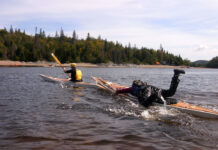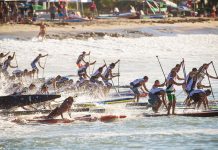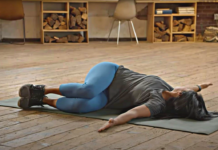One of the keys to developing a healthier lifestyle is finding a physical activity you enjoy doing. Fun and excitement help mask unpleasant feelings you may experience as a result of the activity, and will make you more likely to participate in it more frequently. Can you say the same for spin class?
Getting moving even a little bit is beneficial for your health, but even better if you can elevate your heart rate, strengthen your muscles, and challenge your mind as you learn new skills. According to these parameters, is kayaking a good workout? The answer is, yes! Kayaking works your core through torso rotation movement. It works your upper body when you take paddle strokes. It works your cardio through fast-paced, heart-pumping movement. And it works your mental state as it requires you to puzzle out different movements in whitewater, take on your fears, and overcome doubts about your abilities.
Best of all, you’ll reap all of these benefits and more while having fun. Still not convinced? We’ll go over all your questions and doubts about kayaking and exercise below.
Is kayaking good exercise?
If done properly, kayaking can be very good exercise. However, if you simply float down the river without taking any paddle strokes, you are just sitting on your bum and won’t get any exercise.
If you are using kayaking as a workout, you need to treat it as a workout.
If you are kayaking on flatwater, the best way to get a workout is by doing sprints. Paddle at full “race pace” for one minute, rest for 20 seconds, then paddle at “race pace” for another minute. Rest one minute, then repeat this exercise until your core feels fatigued.
If you are kayaking downriver in a creek boat, the best way to get a workout is to catch as many eddies as you can, do as many ferries as you can, and surf as many waves as you can. If you are paddling class II, you should try to find moves in every rapid that makes it feel like class III. If you are paddling class III, try to find moves that make it more difficult and similar to class IV. Challenge yourself as much as you can every time you are on the water and not only will your skill improve, but so will your endurance and strength.
If you are kayaking in a playboat on a standing wave, you will more than likely get a workout no matter what you do. Freestyle kayaking is an incredible workout for your core, as you will need to keep your core engaged while surfing waves in order to stay stable.
The best way to get strong from kayaking is to kayak as much as possible. The more time you spend in your boat taking strokes, doing sprints and surfing waves, the faster you will progress in both strength and skill.
Can kayaking build muscle?
Kayaking is a workout that will build muscle, but not in mass. Since kayaking is such a fast-paced sport with a large portion of the workout being cardio, you will build a good base of strength, but most likely will not bulk up. Kayaking is good for toning muscles and strengthening them from within.
What muscles does kayaking work?
The main muscles used in kayaking are your abdominals, lats, biceps and forearms. Essentially, kayaking works all the muscles in your shoulders and back. After several months of kayaking multiple times a week, you will begin to see muscle development in your lats. After a few more months, you’ll see muscle development in your biceps and forearms. And after a year, you may even have a six-pack!
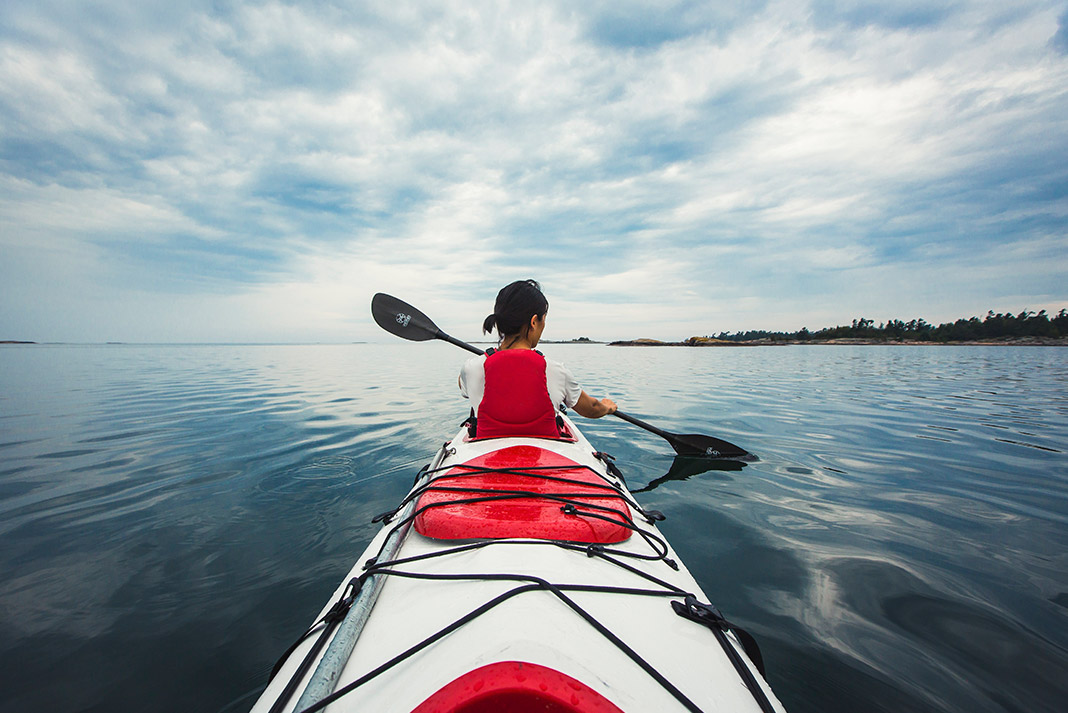
Is kayaking good cardio?
Kayaking can be good cardio if you make it good cardio. What this means is that if you simply float down the river, not taking any strokes and not challenging yourself, you won’t get a cardio workout at all. One the other hand, if you really challenge yourself on the water, taking race laps, doing sprints and trying freestyle tricks, you will get an incredible cardio workout. You get out of it what you put into it.
Calories burned kayaking
The number of calories you will burn while kayaking is entirely dependent on both your body and how hard you are paddling. If you are paddling hard and making kayaking into a good workout, you can burn upward of 400 calories per hour. If you are leisurely floating down the river, you will have trouble burning even 50 calories. Once again, you get out of it what you put into it.
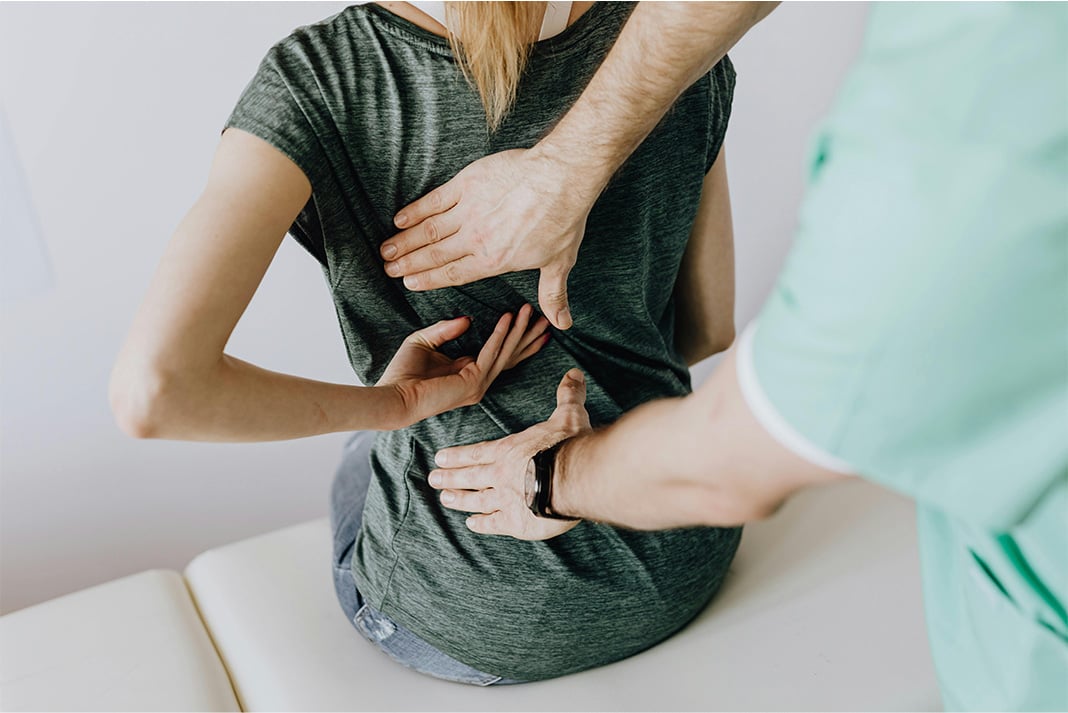
Is kayaking good exercise for back pain?
Depending on the type and severity of back pain you are living with, kayaking can be a good way of helping relieve it. Kayaking works the muscles in your core and lower back through a torso twisting motion. This strengthens the smaller muscles around your spine, thus providing more strength and stability in your back and core.
Before attempting kayaking as back pain relief, make sure to check with your doctor to ensure you won’t be doing any more damage. Once you have been given the okay by your doctor, try to test out as many kayak designs as you can, so you can find one that feels the most comfortable for your back while you are sitting in it. You can also adjust the outfitting in any kayak to provide more back support by adding straps, foam and backrests.
The best advice for using kayaking as back pain relief is to start out small, and slowly build up from there. Start by taking slow strokes in flatwater and then wait two days to make sure you haven’t aggravated your back. If your back feels okay, next time you kayak you can slowly push a bit more. Hopefully in time you will be able to build up the muscles surrounding your spine to provide more stability and pain relief.
Is kayaking a good way to lose weight?
Kayaking is a great form of exercise for anyone looking to lose weight. You will receive the benefits of both cardio and strength training, while not even noticing you are exercising because of how much fun you’re having! The best forms of exercise are the ones where you challenge yourself both physically and mentally, and thus distract your brain from the pain of the exercise, making it more fun and more likely you will stick with it. Kayaking does just that.
However, while kayaking is a great workout and may assist you on your weight loss journey, it can’t do it all. It is a good form of exercise, but if you are looking to lose weight, you will also have to work with a physician or dietician to adjust your diet and lifestyle.


